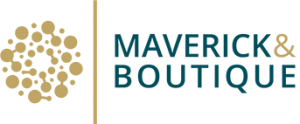Once upon a time, we thought of major projects as space exploration, new warships, armored vehicles or fighter planes, and infrastructure investments in roads, electricity and telecommunications.
Now we must add to that list just about everything we do. Any project or program that involves multiple suppliers and distributors of products and services that work like an integrated web has become a complex major project. Think of how we get the thousands of fresh foodstuffs that are available to us into stores, set up the systems to sell books, hotel and airline seats over the internet, treat the huge variety of diseases we can now diagnose and deal with, provide a seamless integrated public transport ticketing system for a large city or launch a new product or service everywhere around the world.

Many major projects fail to live up to expectations, and they do so for a variety of reasons: underestimating the cost in order to win support, requirements creep or the use of unproven technology or technological change during the course of the project. A tremendous amount of effort goes into dealing with technical risk, specifying the requirements and tightly defining contract terms, as if these entirely logical measures will solve all the problems.
But now, projects increasingly fail due to human factors: the absence of leadership, stakeholder battles, cross-disciplines communication gaps, abrupt changes in the political environment and seemingly unpredictable social shifts in parallel with technological shifts, which we do not see coming.
We live in a world of rich professional and cultural diversity, all of which is required to maintain the infrastructures on which we have come to rely. Also required is consistent, ever-developing creativity, so we can continue to invent better ways of doing things. The educators, the technicians, the builders, the designers, the financiers, the shippers, the carers, the repairers, and the nurturers are all necessary to get it done.
Until now, we have focused, and placed high value, on technological skills at the expense of the so-called soft skills, many of which are critical to successful management of major projects in today’s complex and rapidly changing world. Most project managers have the traditional technical skills; but only one in 20 has the high level leadership, facilitation and knowledge integration skills needed to navigate the rapidly evolving terrain.
To develop and run these systems we need people who have both the technical competence for efficiency and certainty at both the micro and the macro level AND the flexible leadership and communication skills to work well with many people in multiple locations as if each were a close personal relationship.
Project managers must support their people in playing to their strengths, being creative and delivering high level results while facilitating the integration of different opinions, cultures, capabilities and viewpoints so that the new systems or programs are developed and operate in ways that serve everyone’s interests.
So here is a workshop you might like to consider :
1. Thinking about the activities of your organization, what activities could you consider to be a major complex project e.g. IT system roll-out?
2. What are some of the major issues you encounter in trying to design, develop, commission and operate complex projects or programs?
3. How does your organization go about resolving differences or integrating the interests of the suppliers and professionals who develop or maintain the systems and the stakeholders who have an interest in a project or program?
4. What skills are now needed to be able to successfully develop a complex project or program, especially to deal with stakeholder interests integration, conflict resolution and relationship management.



